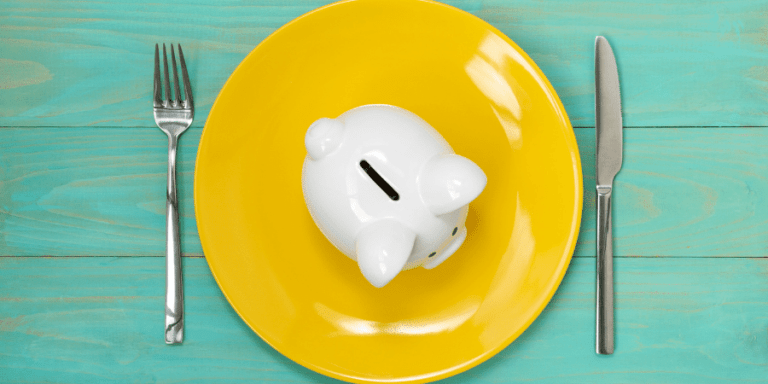HOME BUYING EXPENSES CHECKLIST – 14 COSTS TO BE READY FOR

Overview
At the time of writing this article, my wife and I are currently going through the home buying process. As we navigate this process again, it occurred to me that there are a lot of home buying expenses that inexperienced buyers are probably not aware of. It’s easy to plug a downpayment into a mortgage calculator, see your potential mortgage payment, and think that as long as you have that downpayment, you’re good. Protect yourself from that mistake by reading through our list below.
The 14 home buying expenses you need to be ready for are:
- Downpayment
- Earnest Money
- Home Inspection
- Pest Inspection
- Broker Fees
- Closing Costs
- Repairs
- Appliances
- Moving Expenses
- Property Taxes
- Insurance
- HOA Fee
- PMI
- Mortgage Interest
Let’s take a closer look at each of these home buying expenses:
#1: Downpayment
The first and most obvious home buying expense you’ll want to prepare for is, as mentioned above, a downpayment. It’s fairly common knowledge that most lenders aren’t putting you in a house for no money down. With some loans you can get pretty close, but I personally don’t recommend it.
The best option here is to shoot for at least 20% down. This number typically helps you avoid PMI (see #8). When I say “20% down,” I mean 20% of the purchase price.
For example, if you want to buy a $200,000 home, you’ll need $40,000 as a downpayment to avoid PMI.
#2: Earnest Money
Once you’ve made your offer and it’s been accepted, the home buying expenses come fast. First up is earnest money. This is money you pay almost immediately after signing your initial purchase-sale agreement. It’s given to your agent or broker, and held until it can be applied to your downpayment. This shows your commitment to purchasing the home.
Because it’s actually part of your downpayment, earnest money is not technically an extra $2,000 needed on top of that downpayment. It’s just a chunk of that downpayment. But, you’ll need to have it ready to go as soon as your offer is accepted. So, if you’ve got your downpayment in some type of investment that you’re going to need to cash out on, make sure you’ve at least got a chunk pulled early.
#3: Home Inspection
Once you’ve written your earnest money check and handed that over, you’re going to turn around and immediately set up a home inspection (unless you’ve waived your right to do this). A home inspection gives you a chance to have a professional inspector that you’ve hired spend an extended amount of time in the home you’re planning to buy. They will examine all the things that you probably missed in your excitement and generate a report showing any concerns or issues. You’ll use this report to go back to the sellers and negotiate repairs.
I would not personally bypass this step. However, it is going to cost you something out of pocket.
The price range here is hard to nail down because price will vary widely from company to company and package to package. We’re personally using a highly rated local company that offers three packages. One is $425, another package is $595, and the top of the line package is over $1,000.
#4: Pest Inspection
While a home inspector may point out damage related to some type of pest, they will not take time to determine if there is an active infestation. For this, you will need a pest inspection.
Some lenders or local governments may require this step, but even if it’s not required, it’s probably still worth your time. The price range can, again, be pretty hard to pin down. You’ll want to budget somewhere around $100 on the low end up to a few hundred on the high side.
A pest inspector can tell you if there are any active infestations, how serious they are, and what steps are needed to eradicate them. Again, you’ll use this information for further negotiation.
#5: Broker Fees
There’s a good chance you’re off the hook here, but it’s worth mentioning that your real estate agent (the buyer’s agent) does get paid for their services. This is typically a percentage of the purchase price, and is deducted from the seller’s proceeds at closing. However, it may be worth double checking that your contract is structured this way to ensure that you don’t get stuck with this fee or caught off guard.
#6: Closing Costs
While the seller is probably paying your agent’s commissions, there’s a pretty good chance you are going to pay some, if not all, of your own closing costs. There are a lot of different expenses that fall under this umbrella, and your lender should walk you through each of these point by point.
When making an offer, you may choose to ask the seller to pay for some or all of your closing costs from their proceeds. Depending on the market at the time, they may not be willing to do this knowing that someone else is likely to offer without that request. But, be aware that closing costs can be passed around between the seller and buyer as a negotiating tool. A good realtor can also help you understand how to structure your offer to help roll your closing costs into your loan if needed.
Closing costs can vary widely, but be prepared to get hit with several thousand dollars of expense here just to get into your home.
#7: Repairs
Once you’ve closed, you’re likely going to have some repairs or minor upgrades to do prior to moving in. This might be something as simple as painting or replacing carpet, but it’s still an expense you’ll want to be ready for before moving in.
The price tag here is entirely dependent on how move-in ready your knew home is. If you bought a fixer upper, you may be looking at $40,000 in upgrades. If you bought something that just needs fresh paint, you may only be looking at $4,000.
Regardless, be sure to factor in any repair or upgrade costs when determining how much home you can afford.
#8: Appliances
Sometimes you get lucky here, and the sellers decide to leave you with great new appliances. Other times, you may need to buy some. Be sure to carefully read everything you sign to find out what is staying and what isn’t so you’ll know if you need any cash after closing for major appliances.
#9: Moving Expenses
Every time I’ve moved in my adult life, I’ve used pickups and trailers. But this time, I’m going to go ahead and pay someone to do it for me.
If you have some friends that are ready to answer the call, you can definitely save some money moving yourself. But, if you want the convenience of having someone do the heavy lifting (literally) for you, be ready to pay for it.
Though pricing varies, most companies I’ve researched seem to offer different packages that are priced based on the size of home being moved.
For example, our 3 bed 2 bath home will cost around $2,000 to move if we have the movers do all the prep work and reassembly work along with the lifting. If we do the prep and assembly ourselves, that price gets cut in half.
Research pricing in your area, determine how involved you want to be in the process, and plan accordingly for moving expenses.
#10: Property Taxes
Remember, your mortgage payment is not just the principal and interest amount.
While most mortgage calculators you find online will include a property tax estimate in the approximate monthly payment that they generate, this is not always the case. Double check that this is factored in before deciding on the amount of mortgage you’re comfortable with.
Once you’ve chosen your specific property, you should be able to research to determine the specific cost of that property for a more accurate estimate.
#11: Insurance
Another piece of your monthly mortgage payment will be your homeowner’s insurance. This is another thing you’ll want to have researched upfront to better understand the amount of your monthly payment and where the money is being directed.
Again, most monthly mortgage calculators will factor in an estimated amount. But, for a more accurate idea, you can get quotes from an independent insurance agent. My wife and I are currently working with Zander Insurance, and they have done a fantastic job of shopping quotes for us and helping us understand the coverage we’re getting and why.
#12: HOA Fees
If you move into a neighborhood, there is also the chance you will have some sort of Home Owner’s Association fee. These typically aren’t too costly, but if you’re pushing comfort on your monthly mortgage payment already, this is a little surprise you probably won’t appreciate.
Be sure that you know if the home you are hoping to purchase has any of these fees attached to the property beforehand. Once you have a rough idea of how much this cost is, you can add this into many mortgage calculators for a more accurate monthly payment amount.
#13: PMI
I mentioned in #1 that I recommend shooting for 20% down. However, this will be the first time I’ve bought a home where I actually followed that advice. (Face palm…)
That means, on my previous purchases, I paid PMI, or Private Mortgage Insurance. This is insurance that actually benefits the lender, and is required due to the higher risk they accepted by offering you a loan with less money down.
Take time to let that last bit sink in. You are paying for insurance that benefits your lender, not you. This is a great reason to shoot for 20% .
This expense is also often included as part of your monthly payment, but may be offered as an upfront charge depending on your circumstances.
#14: Mortgage Interest
The last expense I’ll mention is, like the downpayment, fairly common knowledge but worth mentioning. As with most loans, you will be paying your lender for the use of their money. This payment occurs over the life of the loan in the form of interest.
Typically, a shorter loan term will also get you a lower interest rate. This means that not only will you pay off your home faster, but you’ll also spend significantly less on interest while doing so.
With a shorter term comes higher monthly payments, but these are well worth it in the long term as the savings I mentioned above are likely to be tens of thousands of dollars.
The home we are in the process of purchasing at the moment will be on a 15-year fixed rate conventional mortgage with well over 20% down. If you can make this happen, do it. And then, pay it off early!
Conclusion
Whew! That’s a list!
But now you’re ready!
Make sure you have these funds on hand, and you’ll be that much closer to your dream home.
To review, the 14 home buying expenses you need to be ready for are:
- Downpayment
- Earnest Money
- Home Inspection
- Pest Inspection
- Broker Fees
- Closing Costs
- Repairs
- Appliances
- Moving Expenses
- Property Taxes
- Insurance
- HOA Fee
- PMI
- Mortgage Interest
If you’re looking for ways to speed up the process of saving for all these expenses, I’d love to coach you through the process! Book your complementary consultation below!
And as always, regardless of your money goals, you can “Bank on a Budget” to get you from where you are to where you want to be!
It’s easy to plug a downpayment into a mortgage calculator, see your potential mortgage payment, and think that as long as you have that downpayment, you’re good. Think again…
Latest posts by Alex (see all)
- Financial Coaching Services - January 18, 2022
- TOP 10 PERSONAL FINANCE MYTHS THAT ARE HOLDING YOU BACK - February 26, 2021
- HOME BUYING EXPENSES CHECKLIST – 14 COSTS TO BE READY FOR - February 26, 2021







Were you aware of all these hidden expenses related to home buying? What caught you off guard? Did I miss any others?